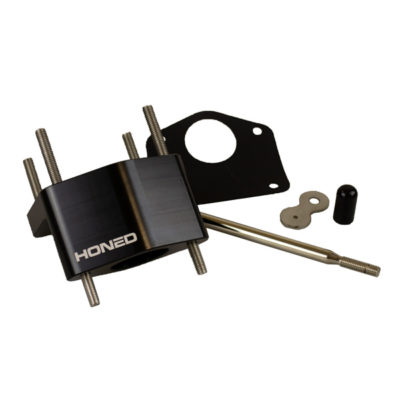The ability to modulate the brakes at the threshold of tyre grip was not one of their design criteria!
The Honda Civic and Integra vehicles that we are modifying for track days and Motorsport started out life as commuter cars and as such were fitted with a vacuum servos (or brake boosters) as part of their braking system.
The benefits of deleting the brake booster for performance driving and Motorsport are:
- Reduced compliance between the pedal and the master cylinder which translates to a firm pedal feel
- No lag between the pressure in the brake lines and the force on the pedal and thus improved braking control
- Reduced sensitivity which makes modulating brake force easier
- Weight reduction
There are two common comments that are made when discussing booster delete kits
- Non-boosted set up are not as powerful and don’t stop as well
- In non-boosted brake system cars the brake pedal is rock hard
Here at Honed we wanted to address these points with numbers and so we organised an EG Civic to install a pre-production version of our booster delete kit into and then we did some testing.
The basic kit includes 2 main parts, the pushrod and the adapter that bolts to the firewall.
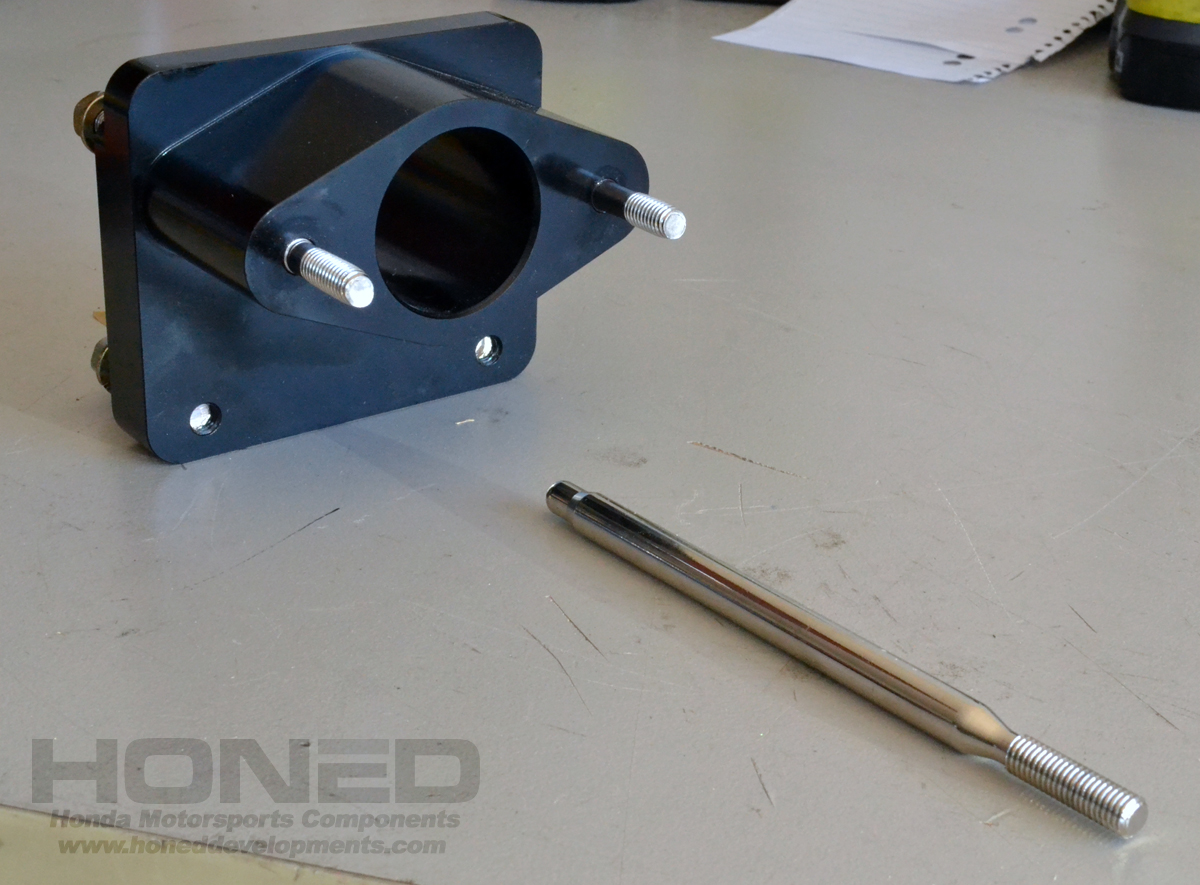
The test car is a bone stock EG Civic Si with tiny 242mm/9.5″ front brakes. We picked this car to show that even without a big brake package, a well designed brake system can work well without the booster. The only modifications on the car are a set of MCA coilovers and the Kosei K1s wrapped in Bridgestone RE003s.
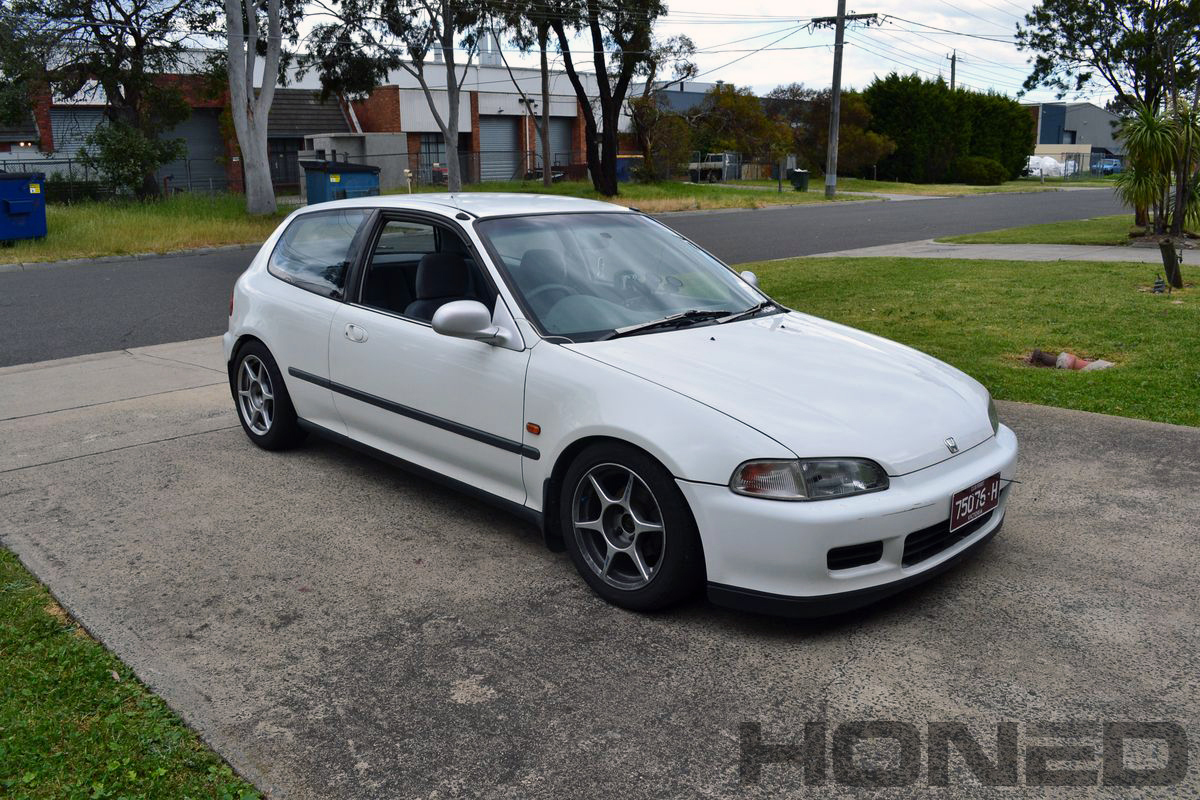
We got the car into the workshop and got to work installing the kit. The process is quite straightforward; the original master cylinder, booster and pedal comes out first, the pedal is modified with a new hole for the pushrod clevis, then the adapter is bolted to the firewall and finally master cylinder is attached to the adapter.
The Honed booster delete kit includes a couple of key features:
– The master cylinder is moved upward compared to the original location, and the pushrod that acts on it is attached higher on the pedal to match. This gives more leverage to compensate for the lack of booster! This is a critical detail that plenty of people ignore when deleting the booster and reduces the required pedal force by as much as 50%.
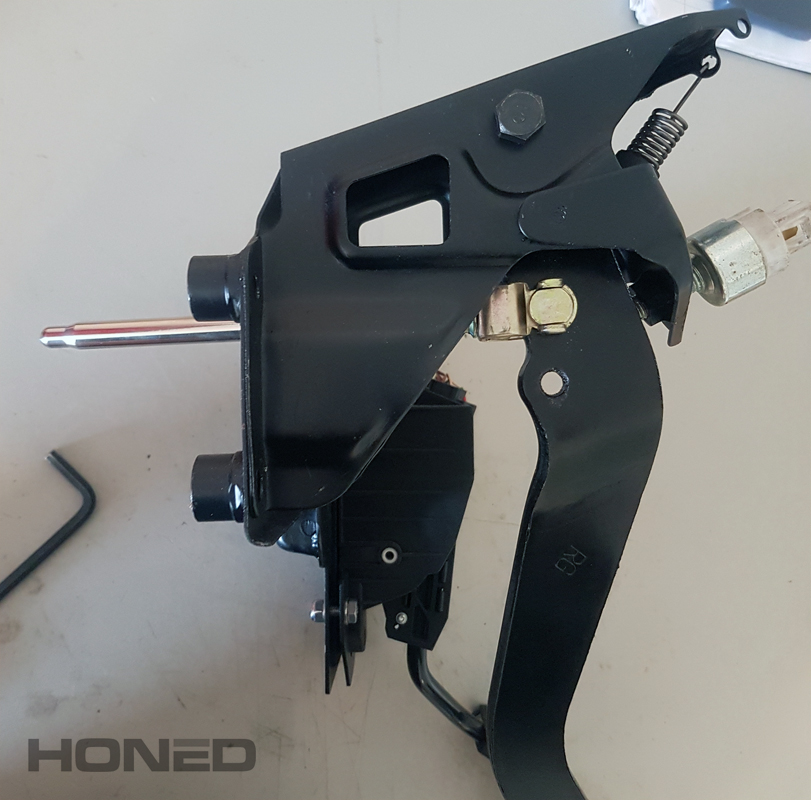
– The adapter suits a standard Honda master cylinder. This gives OEM reliability with the safety of retaining a dual circuit system. Many kits use a single circuit master, with that arrangement if you have a leak anywhere in the brake system you’ve got no brakes, which is obviously extremely dangerous.

Then we mounted up the master cylinder, in this case we used a 13/16″ master to suit the smaller brake package on this car. Another the advantage of using the Honda master cylinder is they’re available in a bunch of different diameters to suit any brake system.
An extra part of the kit we’re developing is a master cylinder brace, mounted to the upper control arm studs. Deleting the booster itself removes a lot of the soft unpredictable pedal feel, as the booster can itself is very flexible, however for extra rigidity we’ll offer these braces as an option:
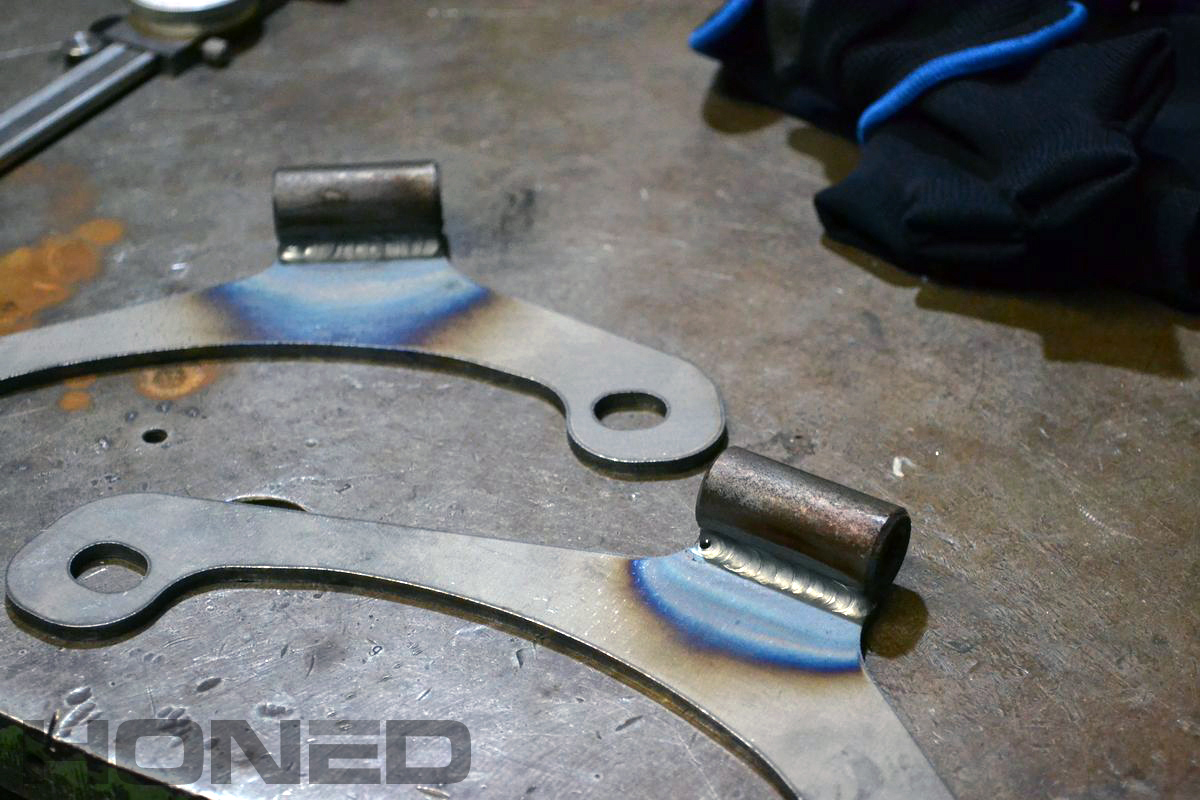
With everything in place we bent up some brake lines and fitted a pressure sensor. That’s the black thing in the photo below mounted to the tee, which lets us directly record the hydraulic pressure in the brake lines during testing.
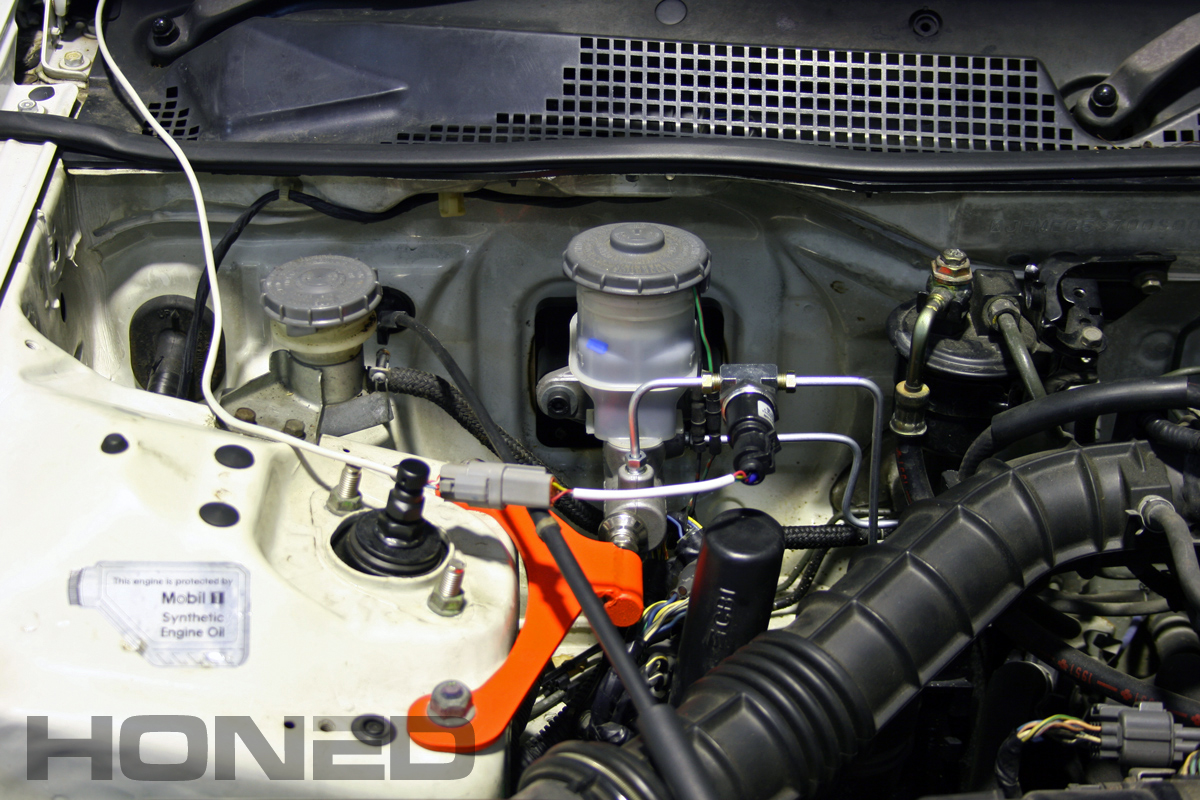
With the booster delete in place and brakes bled we set up the data logging system. We recorded 3 main channels:
– Speed
– Brake pedal force (How hard we were pushing on the pedal, measured in kilograms)
– Pressure in the brake system (The resulting pressure in the brake system, measured in psi)
The three channels give enough data to directly compare the braking performance between the factory boosted system and our setup. Everything plugged in and ready to go:
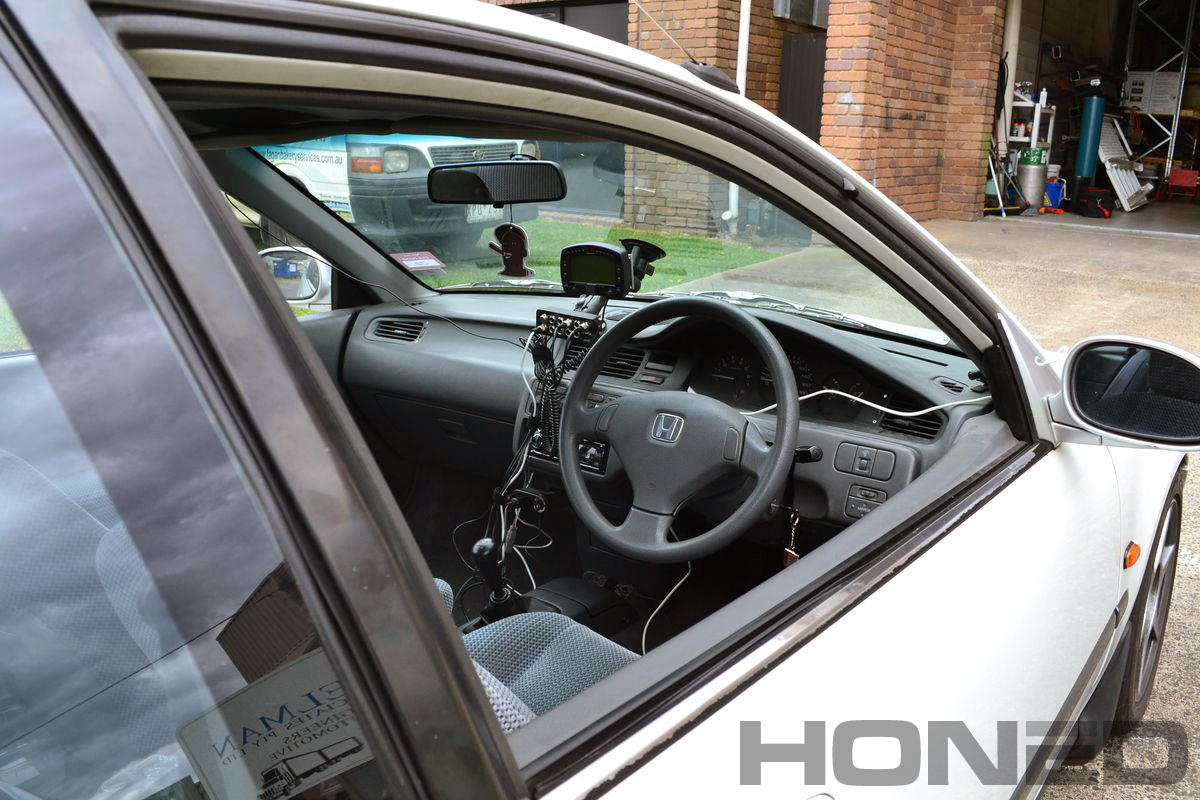
Once we logged a few stops with the booster delete kit fitted we re-installed the factory booster set and and repeated the process.
The table below compares the speed, stopping distance and pedal force numbers of the factory booster set up and the booster delete set up. These numbers were recorded during a stop from 100 km/hr to stationary
| Speed (km/h) | Stopping distance (m) | Pedal force (kg) | Average deceleration (G) | |
| Factory booster set up | 101.9 | 79.5 | 16.75 | 0.51 |
| Honed booster delete set up | 101.1 | 74.9 | 31.75 | 0.54 |
This shows that a correctly sized dual circuit master cylinder and the pedal ratio adjusted to suit the pedal force needed to stop is not a lot more than standard. With typical track day goer having upgraded pads or calipers the difference would be even less. No need to start hitting the gym just yet.
The stopping distance was about the same in both cases which debunks the myth that a non boosted system will not stop as well.
Delving further into the data we noticed another consistent difference between stock and the booster delete. The graph below compares two similar stops with some extra info overlaid. The “pressure ratio” is a number we’ve calculated to illustrate the difference more clearly, it’s simply the pressure in the brake system in psi divided by the pedal force; a higher number means more brake system pressure and more stopping power for the same pedal force.
Ideally the pressure ratio would be constant, giving predictable braking all the time. You would step on the pedal the same amount and be sure to get the same stopping power every time. With the booster in place this isn’t the case!

The graph shows that compared to the force on the pedal the pressure in the brake system varies wildly with the booster. In comparison with the booster deleted the pressure ratio is rock solid, giving consistent braking and making it much easier to control the braking force when threshold braking.
There’s likely bunch of reasons for this, including varying vacuum from the engine, and inherent stiction in the booster itself, but inherently without a simple direct connection between the pedal and the master cylinder the braking system can’t perform consistently, as the data collected shows.
The booster delete kit is in the final stages of development now, with applications to cover all Civic, CR-X and Integra from 1988 to 2000. Check it out here:
honeddevelopments.com/product/honda-civic-brake-booster-delete-kit/
We’ve also fitted a kit to our CR-X, you can check out a more detailed run down of the install here:
https://honeddevelopments.com/booster-delete-cr-x-install/

